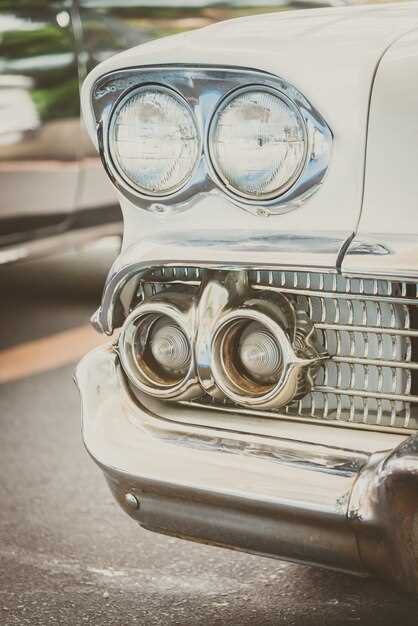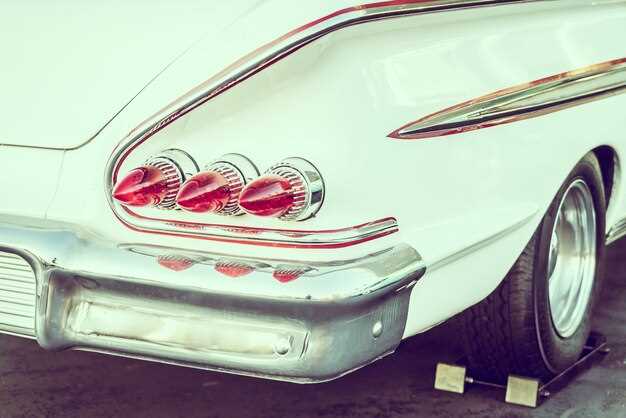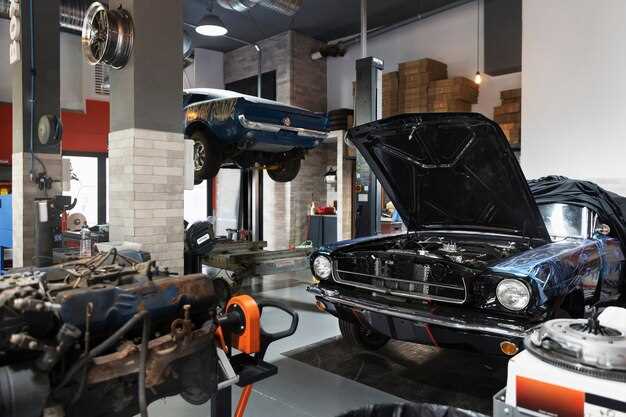
Restoring a classic car can be an exhilarating journey, transforming a relic of the past into a stunning piece of automotive history. However, potential restorers must be aware that embarking on this adventure comes with a range of costs that can vary significantly based on multiple factors. From the condition of the vehicle to the desired level of authenticity, understanding the various expenses involved is essential for anyone considering a restoration project.
One of the first steps in estimating restoration costs is evaluating the condition of the classic car in question. Vehicles that require extensive repairs will naturally demand a larger budget. It’s crucial to assess not only the visible components, such as the body and interior, but also the underlying mechanical systems. A thorough inspection can prevent unexpected expenses down the road, making it a fundamental part of the planning process.
Additionally, decisions regarding the scope of restoration can dramatically impact the overall budget. Restorers can choose between a full, concours-quality restoration, which aims for perfection, or a more straightforward approach that maintains the car’s originality while addressing significant issues. Each choice carries its own financial weight, highlighting the necessity for clear goals and expectations when estimating the costs of classic car restoration.
Breakdown of Restoration Labor Costs for Classic Cars
When considering the restoration of a classic car, understanding the labor costs involved is essential. Labor costs can significantly impact the overall budget, and these expenses vary depending on several factors, including the complexity of the work, the expertise of the technicians, and the region where the restoration takes place.
First, the main categories of labor involved in classic car restoration include mechanical work, bodywork, painting, upholstery, and electrical system restoration. Each category requires specialized skills, which can influence the hourly rates charged by professionals.
Mechanical work typically covers engine rebuilding, transmission servicing, and suspension repairs. Experienced mechanics can demand higher rates, often ranging from $75 to $150 per hour, depending on their expertise and the rarity of the vehicle. This phase can take a substantial amount of time, especially for older models with intricate designs.
Bodywork involves repairing or replacing parts of the car’s exterior, addressing rust damage, and straightening dents. Skilled bodywork professionals usually charge between $60 and $120 per hour. This work often includes extensive labor as it requires precision and experience to maintain the vehicle’s historical integrity.
Painting is another significant aspect, involving surface preparation, priming, and the application of paint. High-quality finishes, especially for classic cars, necessitate specialized painters who may charge between $70 and $150 per hour. The painting process can also be time-consuming, often extending to several weeks due to the necessary drying times involved with multiple paint layers and clear coats.
Upholstery restoration includes the replacement or repair of the car’s seats, headliner, carpet, and interior trim. Upholsterers typically charge between $50 and $100 per hour. This labor requires both craftsmanship and attention to detail to match the original specifications and materials used in the car.
Finally, restoring the electrical systems involves troubleshooting wiring, replacing components such as the ignition system or lighting, and ensuring that all electrical systems function correctly. Electricians with experience in classic car restorations typically charge between $75 and $120 per hour, given the intricacy and safety considerations involved.
In summary, labor costs for classic car restoration can vary greatly depending on the type of work required and the professionals engaged. It is advisable to budget for labor comprehensively, accounting for the various stages of restoration, and to seek detailed estimates from multiple experts to ensure a well-rounded financial plan for your classic car project.
Evaluating Parts and Material Expenses in Classic Car Projects

When embarking on a classic car restoration, understanding the costs associated with parts and materials is crucial. These expenses can vary significantly based on factors such as car make, model, year, and availability of components. Properly estimating these costs can help in budgeting and avoiding unpleasant surprises during the restoration process.
First, it is essential to categorize parts into three main groups: mechanical, body, and interior components. Mechanical parts include the engine, transmission, and suspension systems. These are often the most expensive due to their complexity and the precision required in restoration. It is advisable to create a list of needed mechanical parts early in the project to obtain quotes from various suppliers.
Body parts, which encompass panels, doors, and fenders, can also accrue significant costs. Depending on the age and rarity of the vehicle, these components may be difficult to source. Some car enthusiasts prefer to acquire original parts, while others may opt for aftermarket replicas. Each choice carries different price ranges and quality considerations.
Interior components, such as seats, dashboards, and carpeting, also impact the overall restoration budget. Restoration of these items may involve custom work, which can escalate costs. When evaluating these expenses, consider whether to restore original components or replace them with new ones, as this decision will greatly influence final expenses.
Additionally, sourcing materials for the restoration process plays a vital role in cost evaluation. High-quality materials, such as paint, adhesives, and rust-proofing agents, are essential for achieving a durable finish. Investing in superior materials can lead to long-term savings by reducing the need for future repairs.
Furthermore, labor costs should not be overlooked. If you intend to hire professionals, obtaining estimates from several restoration shops can provide insights into labor-related expenses. If opting for a DIY approach, consider the time and tools needed to complete the project effectively.
In summary, evaluating parts and material expenses requires a thorough analysis of needed components across all categories, careful consideration of sourcing options, and an understanding of associated labor costs. By meticulously planning these expenses, classic car restorers can establish a realistic budget and ensure a smoother restoration process.
Hidden Costs in Classic Car Restoration: What to Anticipate

Restoring a classic car often appears to be a straightforward budgeted project, but hidden costs can rapidly inflate the overall expenditure. Being aware of potential expenses can help you plan effectively and avoid budget overruns. Below are several key hidden costs to consider:
- Parts Availability: Original or reproduction parts may be more difficult to source than anticipated. Prices can skyrocket for rare components, and shipping costs can add to this expense.
- Labor Charges: While it may be tempting to take on restoration work yourself, specialized tasks often require professional expertise. Labor rates for skilled mechanics or restorers can be significantly higher than standard rates.
- Unexpected Repairs: During disassembly, you may uncover rust, body damage, or mechanical issues that were not initially visible. These repairs can quickly add thousands to your budget.
- Paint and Bodywork: Quality painting and bodywork can be very expensive. Additional costs may arise for custom colors or finishes, as well as necessary prep work that might not have been factored into initial estimates.
- Upholstery and Interior Restoration: Revamping the interior can involve costly materials and labor. Depending on the condition of existing components, you might have to replace seats, carpeting, and trim more often than expected.
- Legal Fees and Registration: Depending on your location, getting the car legally roadworthy might include hidden costs like legal fees, special permits for classic cars, or renewing registrations.
- Custom Modifications: If you plan to customize your classic car with modern features or upgrades, installation costs can accumulate. Alterations that seem simple at first can end up requiring extensive modifications.
- Maintenance Costs After Restoration: Don’t forget about ongoing maintenance expenses. Classic cars often require more upkeep than modern vehicles, including specialty servicing and parts replacements.
- Insurance Premiums: Restored classic cars often have higher insurance premiums. It’s essential to get quotes in advance to include this in your overall budget.
By anticipating these hidden costs, you can save yourself from unplanned financial stress during the restoration process. Comprehensive budgeting and preparedness can lead to a more successful and enjoyable restoration experience.
